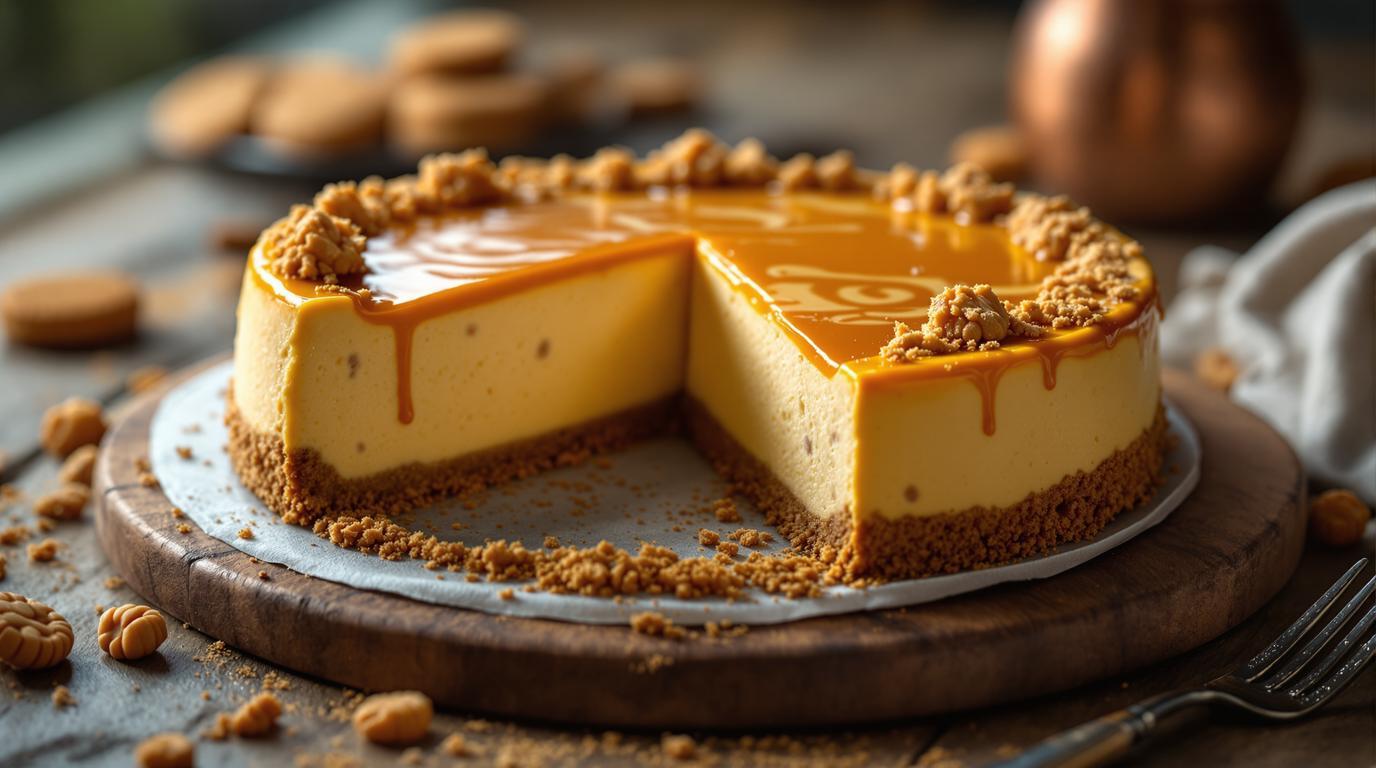I still remember the first time I tasted a proper Speculoos cheesecake in a tiny café nestled between Brussels and Paris. The revelation wasn’t just in the harmonious marriage of spiced cookies and velvety cream cheese – it was in the technique. The owner, a grandmother who’d been baking for 40 years, shared her secret: “Temperature is everything, Jordan. Start high, finish low, and your cheesecake will never crack.” That wisdom transformed my approach to this elegant fusion dessert that bridges Belgian spice traditions with classic New York-style richness.
The Story
Speculoos cookies (those delightfully spiced biscuits served with coffee throughout Belgium and the Netherlands) have been around since the 10th century. When combined with the creamy decadence of cheesecake, something magical happens – the warm notes of cinnamon, ginger, and cardamom infuse the entire dessert with a complexity that ordinary cheesecakes can only dream of achieving. This isn’t just dessert; it’s centuries of tradition reimagined for the modern palate.
Ingredients Spotlight
For the crust:
• 250g (8.8oz) Speculoos cookies, finely crushed
• 100g (7 tbsp) unsalted butter, melted
For the filling:
• 600g (21oz) cream cheese, room temperature
• 100g (3.5oz) crème fraîche or mascarpone
• 150g (¾ cup) granulated sugar
• 4 large eggs, room temperature
• 25g (3 tbsp) cornstarch or all-purpose flour
• 200ml (¾ cup + 1 tbsp) whole milk
• 1 tsp vanilla extract
• Pinch of salt
Optional topping:
• 3 tbsp Speculoos spread
• 2 tbsp heavy cream
Step-by-Step Guide
1. Prepare the crust: Pulse Speculoos cookies in a food processor until finely ground. Mix with melted butter until the texture resembles wet sand. Press firmly into the bottom of a 9-inch (24cm) springform pan. Bake at 350°F (180°C) for 10 minutes until slightly golden. Cool completely.
2. Master the filling: Beat cream cheese until completely smooth – this is crucial for texture! Gradually add sugar and continue beating until light and fluffy (about 3 minutes). Incorporate crème fraîche and vanilla.
3. Add structure: Beat in eggs one at a time, incorporating each fully before adding the next. Fold in cornstarch, then gradually add milk until the mixture is silky and pourable.
4. The two-temperature bake: Pour filling over cooled crust. Bake at 410°F (210°C) for exactly 10 minutes, then without opening the oven, reduce temperature to 195°F (90°C) and bake for 60 minutes.
5. Perfect cooling: When the cheesecake is set but still has a slight wobble in the center, turn off the oven, crack the door open, and let the cake cool slowly for 1 hour inside. This prevents the dreaded crack!
6. Final setting: Refrigerate for at least 4 hours, preferably overnight.
Chef’s Note: The most common mistake with cheesecake is overmixing after adding the eggs, which incorporates too much air and leads to cracks. Mix just until combined – precision matters here!
Expert Techniques
The two-temperature baking method isn’t just tradition – it’s science. The initial high heat sets the exterior structure of the cheesecake, while the gentle, extended low-temperature bake ensures the proteins in the eggs and cheese coagulate gradually, preventing the rubbery texture that comes from overcooking.
For an ethereal texture, try what I learned in a Parisian patisserie: strain your filling mixture through a fine sieve before pouring it into the crust. This removes any tiny lumps of cream cheese or cornstarch that might have escaped your mixing, resulting in a texture that’s quite literally silken. It’s worth the extra few minutes, I promise.
Presentation & Pairing Ideas
For an elegant finish, warm 3 tablespoons of Speculoos spread with 2 tablespoons of heavy cream and drizzle it over the chilled cheesecake, allowing it to cascade beautifully down the sides. Garnish with crushed Speculoos cookies for textural contrast.
This dessert pairs brilliantly with a glass of Sauternes, whose honeyed notes complement the spices, or a lively Moscato d’Asti that cuts through the richness with effervescent charm. For a non-alcoholic option, a spiced apple cider or even a strong espresso creates a memorable flavor journey.
For a seasonal twist, fold 1 cup of roasted pear chunks into the filling in autumn, or macerated strawberries in summer. For dietary adaptations, substitute the cream cheese with dairy-free alternatives and use coconut oil in place of butter for the crust.
Remember, the beauty of this cheesecake lies in its adaptability – make it your own by adjusting the spice level or adding a personal touch like a layer of dark chocolate between the crust and filling. Like all great culinary traditions, this recipe isn’t just about following steps – it’s about understanding principles that let you create your own legacy. What will your signature version be? 🍰✨
